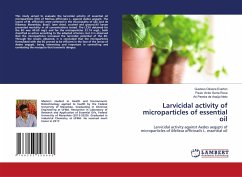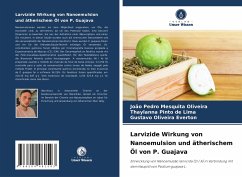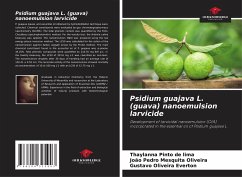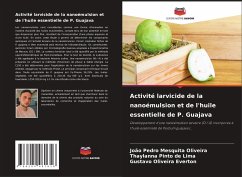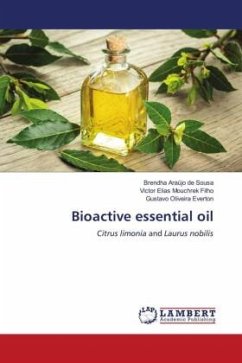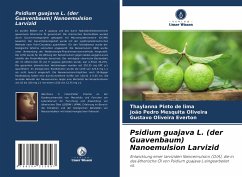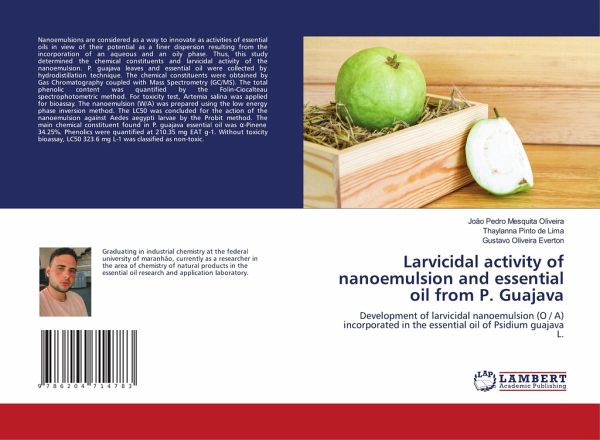
Larvicidal activity of nanoemulsion and essential oil from P. Guajava
Development of larvicidal nanoemulsion (O / A) incorporated in the essential oil of Psidium guajava L.
Versandkostenfrei!
Versandfertig in 6-10 Tagen
27,99 €
inkl. MwSt.

PAYBACK Punkte
14 °P sammeln!
Nanoemulsions are considered as a way to innovate as activities of essential oils in view of their potential as a finer dispersion resulting from the incorporation of an aqueous and an oily phase. Thus, this study determined the chemical constituents and larvicidal activity of the nanoemulsion. P. guajava leaves and essential oil were collected by hydrodistillation technique. The chemical constituents were obtained by Gas Chromatography coupled with Mass Spectrometry (GC/MS). The total phenolic content was quantified by the Folin-Ciocalteau spectrophotometric method. For toxicity test, Artemia...
Nanoemulsions are considered as a way to innovate as activities of essential oils in view of their potential as a finer dispersion resulting from the incorporation of an aqueous and an oily phase. Thus, this study determined the chemical constituents and larvicidal activity of the nanoemulsion. P. guajava leaves and essential oil were collected by hydrodistillation technique. The chemical constituents were obtained by Gas Chromatography coupled with Mass Spectrometry (GC/MS). The total phenolic content was quantified by the Folin-Ciocalteau spectrophotometric method. For toxicity test, Artemia salina was applied for bioassay. The nanoemulsion (W/A) was prepared using the low energy phase inversion method. The LC50 was concluded for the action of the nanoemulsion against Aedes aegypti larvae by the Probit method. The main chemical constituent found in P. guajava essential oil was -Pinene 34.25%. Phenolics were quantified at 210.35 mg EAT g-1. Without toxicity bioassay, LC50 323.6mg L-1 was classified as non-toxic.



